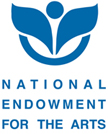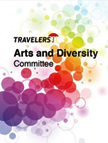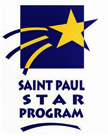Reverse Appliqué |
|---|
 |
R1: This is a reverse appliqué piece with a black overlay cloth cut into quadrants and sewn over the red foundation cloth. The motifs contain dragon tails and a star motif in the center. This piece was sewn with closed blanket stitches at the edges of the star. Inside the star, chain
By Mai Thao, 1990, 26x26 cm |
Back to Top |
 |
R2: This artwork was developed using a reverse appliqué technique. The reverse appliqué was cut, folded, and sewn onto the background. The motifs utilized include steps and an elephant’s foot. It was also embroidered with satin stitches representing seeds.
|
Back to Top |
 |
R3: The motifs used in this reverse appliqué piece include both steps and the elephant’s foot. The channels were embroidered with running stitches. This piece of paj ntaub is also decorated with flower satin stitches.
|
Back to Top |
 |
R4: This artwork involves a reverse appliqué constructed on a cloth that contains a mixture of hemp and cotton. The main motif utilized is the elephant’s foot. Within it is a mirrored step motif repeated four times, creating a house motif. The same steps are also found in the corners outside the elephant’s foot. In the motif channels running stitches are embroidered as decoration. Seeds embroidered with satin stitches are also included as a decoration.
|
Back to Top |
R5: This piece was created using a reverse appliqué method. The main motifs utilized include snails, an elephant’s foot, and steps, along with seed and flower embellishments as decorations. Snail motifs usually are found on the collars, sleeves, cuffs, belts, and money bags of the Hmong from Luang Prabang Province, Laos.
|
Back to Top |
 |
R6: This is a reverse appliqué paj ntaub. The main motif that is visible displays a modified elephant’s foot. At the corners, steps are featured, and the piece is decorated with flower satin stitches. Red and blue appliqué borders provide a frame.
By an unknown artist, 1980s, 15x15 cm |
Back to Top |
 |
R7: A reverse appliqué technique was used on this piece. It includes an unknown motif that looks somewhat like a butterfly design and certain elements of the elephant’s foot are also
By Chee Vang, 1980s, 11x11cm |
Back to Top |
R8: This is a reverse appliqué piece, made in a mirror image and created by folding the cloth into quadrants. The motifs involve snails and cucumbers; however, they represent innovative variations on the traditional designs. This piece was embroidered on 100 percent cotton.
By Mai Kua (last name unknown), 1990, 26x26 cm |
Back to Top |
R9: The motifs involved in this piece include snails and steps. When the steps are done in quadrants and face each other, as a whole they represent a house or family and symbolize unity. The three layers of this reverse appliqué are the background cloth, the blue foundation layer, and the overlaid cloth. Flowers are utilized as embellishments.
|
Back to Top |
 |
R10: This piece represents a reverse appliqué paj ntaub. The motifs used include snails and diagonal bars. The T shapes are used as decorations and have no meaning. Satin stitches were used to embroider the flowers and seeds. A reverse appliqué was developed on a pale yellow background, and also serves as the border.
By Lee Moua, 1997, 17x17 cm |
Back to Top |
Page 1 >> Page 2 |



